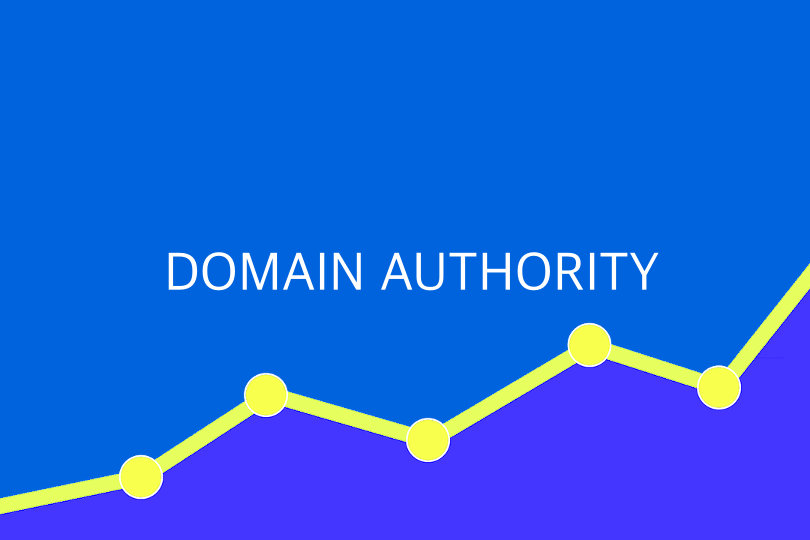What could you accomplish if your marketing team could see into the future? They’d know how the blogs and webpages they create would rank in search engine results pages (SERPs). And if they’re building a website that attracts traffic – or more specifically – marketing leads – they’d know how a month of backlinking, improving technical SEO, and social media posts impact the number of page one rankings for your site.
Of course, no one can see into the future, especially when your fate depends on Google’s highly guarded ranking system. But tracking domain authority (DA) can provide insights that keep marketers on the right track.
![]()
What is Domain Authority?
Domain authority is a score that shows how good and important a web page is, according to Moz, a company that helps with website optimization. The score lets marketers and SEO experts know how well a page compares to others trying to get people to visit their site. Each page on a website can have a different DA score, but if a page has a high score, it can help other pages on the same website to also do well. This is done through internal linking.
Domain authority scores range from 0 to 100, with anything lower than 30 considered low, and the content from that site is less likely to rank well in search engines. On the other hand, DA scores above 80 indicate excellent domain authority and an increased chance that quality content posted on that website will appear on page one results for their keywords.
Note that domain authority scores are based on a logarithmic scale, so you’ll see faster gains when starting out. When the DA score increases, it becomes progressively harder to achieve the same percentage increase in score. This is why improving a DA score from 30 to 40 is generally easier than improving a DA score from 50 to 60, even though the difference in score is the same.
Also, keep in mind that domain authority alone won’t guarantee a page one ranking. You must produce high-quality content relevant to the topic of your website, include links to other pages and sources, and create interest with features such as images, infographics, and video. You should also optimize content for the keywords your audience uses to search for information. Great content on a website with high domain authority is a winning combination.
How to Check Your DA Score
Moz offers a free Link Explorer tool that collects data about your website – or a competitor’s site – and calculates its domain authority score. A web page’s popularity is the most important factor in determining the score. The Moz tool also considers a range of factors, for example, the number of backlinks to the site, how many different domains are sending traffic to the page, how many domains link to it, and the website structure where the page is located.
Older pages on established websites, with a history of sharing valuable content, tend to have higher DA scores than pages on new domains. But a new website with a marketing team that actively works to build authority can still rank well within a short period.

How Can You Raise Your Score?
Businesses can take several steps to build stronger domain authority, including:
Create content your audience wants
Your primary focus should always be producing content your audience will find valuable. While incorporating good SEO practices will make that content more visible, once your customers find it, you want to impress them with your ability to answer their questions and offer solutions to their problems. That will keep them coming back.
Increase backlinks from high-profile sites
Use an SEO tool to monitor the number of backlinks you have to your site and take action to increase them. This may involve asking partners to link to your site, sharing marketing assets such as surveys, e-books, or infographics you’ve developed, and asking media to cite and hyperlink to them. In addition to increasing the number of backlinks, you want to earn backlinks on web pages with a good DA score and a healthy organic traffic volume.
Perform a site audit and fix red flags
A site audit will reveal your website’s issues with the technical aspects of SEO and show you priorities for correcting them. Fixing broken links, adding missing meta descriptions and image alt tags, addressing subpar page loading speed, and other problems can result in better DA scores for your web pages.
Expand your social media presence
Sharing blogs, marketing assets, and web page links on social media will help drive traffic to your site. While those links aren’t “backlinks” per se, they can positively impact your website’s popularity.

Start with Your Domain
Web pages that are easy to find from a list of search engine results can expect more traffic than those that aren’t. But remember, not every click comes from a SERP. New web addresses that use both sides of the dot to express what a business does can also result in more visits – and return visits – because they’re more memorable. A web address ending in .io, .cafe, or .agency stands out from run-of-the-mill legacy domains, so it can capture more interest. New web addresses also signal to your audience that your business is forward-thinking and cutting-edge.
Once you’ve chosen a domain name that perfectly communicates your digital identity, it’s time to build domain authority by focusing on content quality, backlinks, technical SEO, social media activity, and other initiatives that build traffic to your website and interest in the content you publish there.



